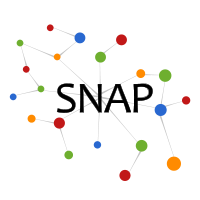Florida bay food web
Dataset information
In this network, the nodes are compartments and edges represent directed carbon exchange in the Florida bay. There is an edge from i to j if compartment j consumes carbon from compartment i (often, this means species j eats species i). The compartments are mostly organisms but also encompass special nodes such as "input" and "output". Included with this network are group classification labels (derived from ATLSS). Examples groups include "Zooplankton Microfauna" and "Pelagic Fishes".
| Dataset statistics | |
|---|---|
| Nodes | 128 |
| Edges | 2106 |
| Nodes in largest WCC | 128 (1.000) |
| Edges in largest WCC | 2106 (1.000) |
| Nodes in largest SCC | 103 (0.805) |
| Edges in largest SCC | 1579 (0.750) |
| Average clustering coefficient | 0.3346 |
| Number of triangles | 8437 |
| Fraction of closed triangles | 0.1313 |
| Diameter (longest shortest path) | 3 |
| 90-percentile effective diameter | 1.9 |
Source (citation)
-
For the network:
- Robert E. Ulanowicz, Cristina Bondavalli, and Michael S. Egnotovich, 1997, Network analysis of trophic dynamics in South Florida ecosystems--The Florida Bay Ecosystem: Annual Report to the U.S. Geological Survey, Biological Resources Division.
- Austin R. Benson, David F. Gleich, and Jure Leskovec. "Higher-order Organization of Complex Networks." (2016). Science, 353.6295 (2016): 163–166.
For the group classification:
Files
| File | Description |
|---|---|
| Florida-bay.txt.gz | Food web |
| Florida-bay-meta.csv.gz | Group classification and node labels |



